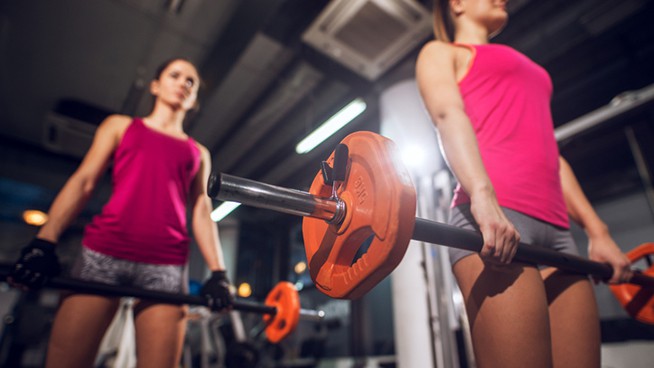Workout recovery has long been a staple in training programs for all goals. In fact, if you neglect any one of the “big three” components of fitness—training, nutrition or recovery—the remaining two become less effective. Reaching your full potential will feel like walking up a downward-moving escalator. You can grind through the most advanced workouts and follow strict nutritional guidelines, but if you sleep three hours a night and fail to address mobility, you will fail to reach your true potential.
What do we include in workout recovery, and how do we fit it into our current programs?
The loose term “recovery” is used to describe low-level exercises designed to improve functionality and movement, reduce oxidative stress caused by exercise and restore energy to a fatigued system. “Recovery” has progressed from sitting in a circle performing static stretches and getting eight hours of sleep, to a more active form of recovery, encompassing everything from functional mobility and primal movement patterns to balance, injury prevention, and stability of intrinsic and extrinsic accessory muscles.
RELATED: A Step-by-Step Guide To Workout Recovery
Active recovery can be included between sets of intense work with low-level mobility and accessory exercises, or at the end of a workout to maximize performance benefits and keep you on the field longer.
When performing workout recovery after a training session, consider adding balance exercises to the mix for injury prevention. Performing dynamic balance exercises after a workout may help train the muscles to stabilize through fatigue and prevent certain injuries. The Active Recovery Circuit (ARC) system addresses this with 12 circuits comprised of three exercises each, one dynamic balance exercise, and two mobility/stability exercises.
Try these 3 ARCs for foundational development, injury prevention and improved functionality following your workout:
ARC 1
- Single-Leg RDL and Touch (Standing Reaches) – 3×12-15 each side
- FMS Toe Touch Progression – 3×5 each variation
- Deep Squat with Abduction – 4×5
ARC 2
- Crossover Hop and Stick – 3×4 hops each leg
- Single-Leg Lowering – 3×12 each side
- Side-Lying Windmill – 3×5-7 each side
ARC 3
- Depth Jump (Drop Jump) – 4×5 (first set Depth Drop and Stick)
- Turkish Get-Up To Post (Eccentric Lowering) – 3×5-7 (3-5-second lowering)
- Standing “Y” to “W” – 3×7-10
References:
[cf]skyword_tracking_tag[/cf]RECOMMENDED FOR YOU
MOST POPULAR
Workout recovery has long been a staple in training programs for all goals. In fact, if you neglect any one of the “big three” components of fitness—training, nutrition or recovery—the remaining two become less effective. Reaching your full potential will feel like walking up a downward-moving escalator. You can grind through the most advanced workouts and follow strict nutritional guidelines, but if you sleep three hours a night and fail to address mobility, you will fail to reach your true potential.
What do we include in workout recovery, and how do we fit it into our current programs?
The loose term “recovery” is used to describe low-level exercises designed to improve functionality and movement, reduce oxidative stress caused by exercise and restore energy to a fatigued system. “Recovery” has progressed from sitting in a circle performing static stretches and getting eight hours of sleep, to a more active form of recovery, encompassing everything from functional mobility and primal movement patterns to balance, injury prevention, and stability of intrinsic and extrinsic accessory muscles.
RELATED: A Step-by-Step Guide To Workout Recovery
Active recovery can be included between sets of intense work with low-level mobility and accessory exercises, or at the end of a workout to maximize performance benefits and keep you on the field longer.
When performing workout recovery after a training session, consider adding balance exercises to the mix for injury prevention. Performing dynamic balance exercises after a workout may help train the muscles to stabilize through fatigue and prevent certain injuries. The Active Recovery Circuit (ARC) system addresses this with 12 circuits comprised of three exercises each, one dynamic balance exercise, and two mobility/stability exercises.
Try these 3 ARCs for foundational development, injury prevention and improved functionality following your workout:
ARC 1
- Single-Leg RDL and Touch (Standing Reaches) – 3×12-15 each side
- FMS Toe Touch Progression – 3×5 each variation
- Deep Squat with Abduction – 4×5
ARC 2
- Crossover Hop and Stick – 3×4 hops each leg
- Single-Leg Lowering – 3×12 each side
- Side-Lying Windmill – 3×5-7 each side
ARC 3
- Depth Jump (Drop Jump) – 4×5 (first set Depth Drop and Stick)
- Turkish Get-Up To Post (Eccentric Lowering) – 3×5-7 (3-5-second lowering)
- Standing “Y” to “W” – 3×7-10
References:
[cf]skyword_tracking_tag[/cf]










